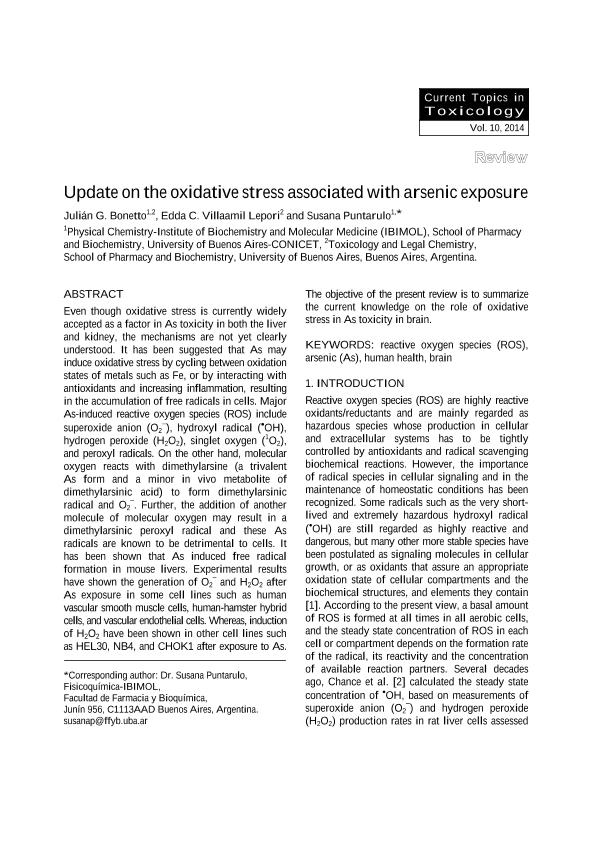Artículo
Update on the Oxidative Stress Associated with Arsenic Exposure
Fecha de publicación:
12/2014
Editorial:
Research Trends
Revista:
Current Topics in Toxicology
ISSN:
0972-8228
Idioma:
Inglés
Tipo de recurso:
Artículo publicado
Clasificación temática:
Resumen
Even though oxidative stress is currently widely accepted as a factor in As toxicity in both the liver and kidney, the mechanisms are not yet clearly understood. It has been suggested that As may induce oxidative stress by cycling between oxidation states of metals such as Fe, or by interacting with antioxidants and increasing inflammation, resulting in the accumulation of free radicals in cells. Major As-induced reactive oxygen species (ROS) include superoxide anion (O2 −), hydroxyl radical (?OH), hydrogen peroxide (H2O2), singlet oxygen (1O2), and peroxyl radicals. On the other hand, molecular oxygen reacts with dimethylarsine (a trivalent As form and a minor in vivo metabolite of dimethylarsinic acid) to form dimethylarsinic radical and O2¯. Further, the addition of another molecule of molecular oxygen may result in a dimethylarsinic peroxyl radical and these As radicals are known to be detrimental to cells. It has been shown that As induced free radical formation in mouse livers. Experimental results have shown the generation of O2¯ and H2O2 after As exposure in some cell lines such as human vascular smooth muscle cells, human-hamster hybrid cells, and vascular endothelial cells. Whereas, induction of H2O2 have been shown in other cell lines such as HEL30, NB4, and CHOK1 after exposure to As. The objective of the present review is to summarize the current knowledge on the role of oxidative stress in As toxicity in brain.
Palabras clave:
Ros
,
Arsenic
,
Human Health
,
Brain
Archivos asociados
Licencia
Identificadores
Colecciones
Articulos(IBIMOL)
Articulos de INSTITUTO DE BIOQUIMICA Y MEDICINA MOLECULAR
Articulos de INSTITUTO DE BIOQUIMICA Y MEDICINA MOLECULAR
Citación
Puntarulo, Susana Ángela; Villaamil Lepori, Edda Cristina; Bonetto, Julián Gerardo; Update on the Oxidative Stress Associated with Arsenic Exposure; Research Trends; Current Topics in Toxicology; 10; 12-2014; 37-48
Compartir




